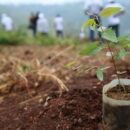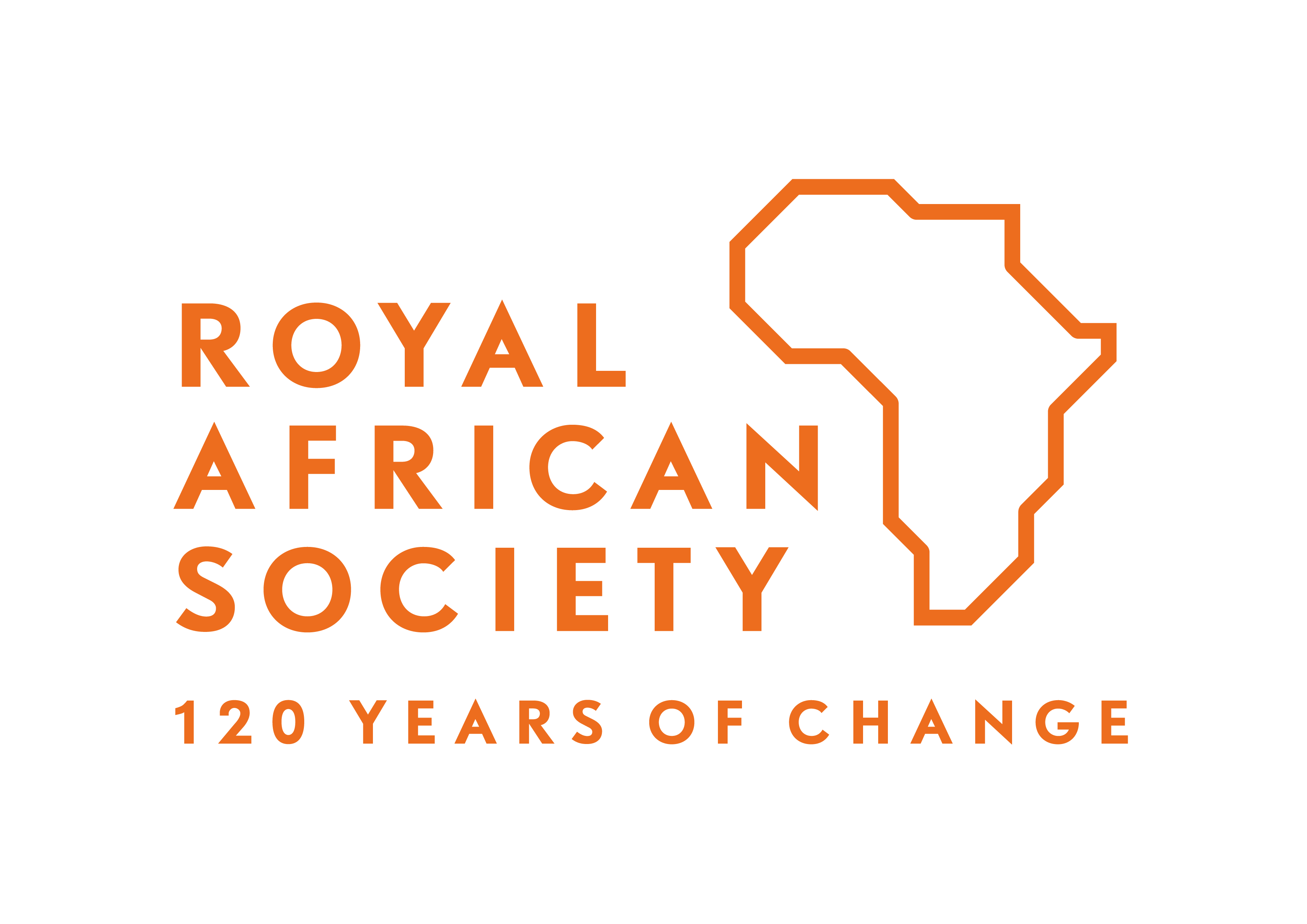2003: All Quiet on the Western Front?
Recently on this blog, an interesting question was posed: where was Save Darfur “and its advocacy and influence” in 2003? It is a good question, but seems to valorise advocacy excessively (as has this whole Mamdani / Save Darfur debate) when it has not (yet) supplanted the media as the Fourth Estate. Undoubtedly, there is a degree of cross-pollination between the two, and the conflict has been further entrenched on both their watches. However, it is also necessary to ask where were the media in 2003? Getting to the bottom of this can help shed light on the foundations upon which advocates such as Save Darfur built.
During the calendar year following 26 February 2003 (for arguments sake, the attack on Golo is taken to be the start of the conflict), five articles about Darfur appeared in the British mainstream media, three of which were news-in-brief in the Independent (culled from newswires) – a combined total of 165 words. The other two were in the Guardian (both in early 2004). By this stage, the frequency of attacks had peaked, according to statistics used by the Prosecution in preparing their case at the International Criminal Court.
This virtual silence seems counter-intuitive from today’s perspective, as this was a large chunk of the period of high-intensity conflict that set the tone for much of the future media coverage and advocacy as characterised by Save Darfur. Nevertheless, the very low exposure of Darfur in the British media in 2003 is a matter of record, and is a state of affairs replicated among major publications in the US.
If a particular subject is missing from a newspaper, the explanation is that there is no editorial appetite for it. Undoubtedly, Khartoum actively opposed reporting from Darfur. In fact, then-minister of information and communication, Al-Zahawi Ibrahim Malik, in March 2003 was already complaining that the media “had magnified events and portrayed untrue facts” (13 March 2003, Al-Khartoum). Amnesty International in July 2003 drew attention to the case of Yusuf Al-Beshir Musa, a correspondent of Al-Sahafa in Nyala, South Darfur, who was arrested and beaten by the security forces “apparently because he wrote about the destruction of Sudan air force planes and helicopters in El Fashir airport by the Sudan Liberation Army.” Having said that, Sudan normally fares better than many other countries in the neighbourhood (such as Ethiopia, Egypt, Eritrea, and Libya among others) in the Reporters Without Borders Annual Press Freedom Index, having kept a cushion of 24-38 other countries in between them and least free country press-wise in the world since these records began (2002). However, its lowest ever ranking was 2003.
Nonetheless, a wide range of sources were available to journalists potentially covering Darfur, which was most certainly on the radar of newswires in early 2003 (among others, Agence France Presse, the Associated Press, Reuters, the Pan African News Agency, United Press International and Integrated Regional Information Networks were reporting Darfur then).
The Arab media has been criticised in the past for its scant regard for Darfur, but it did cover the region in 2003. For example, a report on Al-Jazeera prompted then-Governor of North Darfur Lt-Gen Ibrahim Sulayman to refute on Sudanese TV on 27 February 2003 its claims that a rebel movement had occupied Golo. A further exempli gratia: the attack on Al-Fasher airport was reported by a number of Sudanese outlets (print and broadcast), and regional news agencies and newspapers, including Egypt (MENA), the Gulf (Al-Watan, Qatar), Jordan (Al-Bawaba), the Saudi Press Agency, and the London-based Arabic-language newspapers Al-Hayat and Asharq Al-Awsat.
However, one caveat to mention is that the freedom given to these agencies and their staff to report is another matter, as is the appetite they themselves had to report in any depth; Darfur has never been an ideal reporting environment for a wide range of reasons, not just government obstruction.
The one British newspaper to report the attack on Al-Fashir airport, the Independent on Sunday (27 April 2003), then reported nothing further until nine months later (24 December 2003) because nothing in its opinion happened there that was newsworthy, though this was not the opinion of the various outlets mentioned above.
In fact, it was NGOs that began drawing attention to Darfur – this much is confirmed in one of the early broadsides to a dormant public about Darfur. After several attempts and what amounts to sanitizing for public consumption, the Washington Post published a commentary by Eric Reeves (Unnoticed Genocide, 25 February 2004) in which the opening paragraphs quote both Doctors Without Borders and Amnesty International, an organisation that the author writes “has led the way in reporting on Darfur.”
This was an accurate observation. For example, Amnesty noted the “deteriorating situation” in Darfur in February 2003. The International Crisis Group likewise pre-dated mainstream media interest with Sudan’s Other Wars (25 June 2003), as did Sudan: Empty promises? Human rights violations in government-controlled areas (15 July 2003), again from Amnesty. A 3 February 2004 report, Darfur: “Too many people killed for no reason”, yet again from Amnesty, coincided with the start of much greater media interest in Darfur.
Incidentally, one further avenue of study is to trace the evolution of language used to describe Darfur in NGO work and the media; Amnesty in July 2003 referred to an emerging conflict between “˜sedentary groups’ and “˜nomadic groups’, terms that are contextualised – but which would be simplified in the future to “˜Africans’ and “˜Arabs’ in the absence of sufficient contextualisation.
However, the reports produced by NGOs are not categorised in the same way as articles produced by journalism. While newspaper reporters are by definition (textbook, at least) “˜objective’ and required to provide “˜both sides of the story’ (in news articles, as opposed to opinion pieces), NGOs have no similar, developed branch of ethics requiring them to do so. In fact, they profess to lobby for a particular outcome: Amnesty campaigns for “human rights for all,” while the ICG says it provides, among other things, “sharp-edged policy prescription and high-level advocacy.” No newspaper or news agency would claim the same.
Undoubtedly, this is a vital role to fulfill in civil society, especially in areas, such as Darfur, where the media simply cannot cover everything, if at all, to the tastes of a wide range of consumers. Darfur in 2003 was at best an esoteric subject, at worst almost completely ignored by the mainstream. However, it also needs to be said that it is entirely legitimate for journalism to draw upon secondary post-event accounts as source material, such as interviews, recollections, contemporary photos etc – but this is not the same as being eyewitness to something.
The question we are left with is what quality does NGO-led news agenda-setting bequeath the journalism on Darfur once they have caught up? Inevitably, subsequent (Western) journalism is qualified by its absence in the early period, as it was obliged to build on foundations provided by others that operate in a different way to it.
In contrast to Darfur, the invasion and subsequent occupation of Iraq in the same year received global blanket coverage that pushed the boundaries of journalism and of credulity at times. This comparison merely makes the point that if there is an editorial appetite – such as the US-led coalition removing one of the West’s great bogeymen – the media consumer can be made to feel that there is nothing he or she does not know about a subject. This in Darfur came much later.
It is worth adding that news from Iraq (which was very well-attended by journalists) – in 2003 and ever since – is still contested in areas for its legitimacy of journalistic practices, such as embedding and venturing no further than the Green Zone for whatever reason.







Dear Mr. Gabriel,
When you asked “where were the media in 2003?” I immediately responded Iraq, which you later layed out in your article. Iraq was straightforward, well marketed (it had to be, I mean afterall it WAS invasion not intervention) and when international media is concerned, other than journalists on staff, as most freelancers cater to the US press, Iraq was the ultimate destination. It was inevitable. Africa has always been complicated. And media doesn’t like complicated. It is not cost effective. And brutal as it may sound, media doesn’t like black either. Were they to choose between a black and a white conflict, the white is definitely more attractive.
Africa, you have to explain. You have to educate even, and media leaves education to the schools. “Journalists” are interested in “objective” coverage, with a “subjective” stance on things (as well as large expense accounts which they can blow off in hotel rooms and write articles based on press releases) So when you run out of conflicts, or rather when conflicts turn stale you turn to Africa.
Ah, and you also turn to Africa if one of your countrymen is over there fighting (“could be fighting” is also good enough)
Even today, with all these popular and much debated advocacy movements, the average civilian has no clue as to what is going on in Darfur. Not a day passes when a friend strolls in with the question, “so what IS really going on in there?”
However now there certainly is a load of material on the internet. When I first started covering the conflict, I could find hardly anything on the internet. 2003-2004 was a relative dead zone. And myself not being a Sudan specialist, was groping in the dark. This is no longer the case (I still am not a Sudan expert but at least I have a myriad of literature to research on). It is amazing how much has been written (correct or erroneous) on Darfur alone. Even Chad. Once a hole in the world of information now there are at least 7 books I can think of describing the tarmac runway of the Nd’jemena airport before jumping into tell about Darfur.
And now with Obama stepping in to the White House, curious days are here. I wonder if with a black president in office, the attitude of the mass media towards Africa will change. It would be a good day if it did.
Guy Gabriel raises extremely important questions, and his account of failure by the international news media is chilling in its accuracy. How could it be that multiple reports from Amnesty International, Doctors Without Borders, the International Crisis Group, and Human Rights Watch were not taken seriously? They were authoritatively researched and devastating in implication. (One feature that needs greater highlighting here is the focus of international news coverage on the Naivasha peace talks between Khartoum and the SPLM).
I for one had no difficulty or reservation, on the basis of precisely these reports and other information readily available, to declare the reality of genocide, the need for compelling reporting on the growing catastrophe, and the risks of a partial peace:
On Genocide in Darfur:
December 30, 2003
from Africa InfoServe (Sudan publications of AfricaFiles.org)
http://www.africafiles.org/article.asp?ID=4075
by Eric Reeves
It is intolerable that the international community continues to allow what all evidence suggests is genocide. For surely if we are honest with ourselves we will accept that the term “ethnic cleansing†is no more than a dangerous euphemism for genocide, a way to make the ultimate crime somehow less awful. As Samantha Power has cogently observed, the phrase “ethnic cleansing†gained currency in the early 1990s as a way of speaking about the atrocities in the Balkans—“as a kind of euphemistic halfway house between crimes against humanity and genocide” (page 483, “‘A Problem from Hell’: America and the Age of Genocide”). But linguistic half-measures are not enough when the question is whether an “ethnical [or] racial group†is being destroyed “in whole or in part‗“as such.â€
The present realities in Darfur must urgently be rendered for the world to see and understand—fully, honestly, and on the basis of much greater information than is presently available. In turn, these realities must guide a humanitarian effort that will not allow Khartoum’s claim of “national sovereignty†to trump the desperate plight of hundreds of thousands of innocent civilians caught up in a maelstrom of destruction and displacement. That no such efforts are presently being undertaken—Ambassador [Tom] Vraalsen declared (December 8, 2003) that humanitarian operations in Darfur have “practically come to a standstill‗is of the gravest concern.
Indeed, the logic of the situation is so compelling that one can only surmise that the failure of the international community even to speak of the possibility of a humanitarian intervention in Darfur derives from some morally appalling failure of nerve, and an unwillingness to roil the diplomatic waters with a peace agreement so close between Khartoum and the SPLM/A. But this latter concern represents exactly the wrong way to view both Darfur and its relation to the last major issue outstanding in the present peace negotiations between Khartoum and the south, viz. the status of the three contested areas of Abyei, the Nuba Mountains, and Southern Blue Nile. For unless the international community shows its concern for the various marginalized peoples of Sudan, peace will be only very partial and ultimately unsustainable.